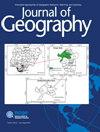Efforts to Grasp Progresses of Recovery and Reconstruction Following the Great East Japan Earthquake on Broader-Areas and Local-Areas
IF 1.8
3区 地球科学
Q1 GEOGRAPHY
引用次数: 3
Abstract
As part of the recovery and reconstruction efforts following the Great East Japan Earthquake that occurred on March 11, 2011, at least two directions based on the conventional “record of disasters” are being pursued to identify the magnitude of disaster damage. The first is called “disaster archives,” which are detailed records of the disaster process in smaller areas and on a personal scale. The second direction aims to quantitatively measure the degree of subsequent recovery and restoration progress based on objective information including statistics. Various entities including the national government, local governments, and private research institutions are carrying out the latter efforts. Policy implementations following “evidence-based policymaking” (EBP) are also regarded as essential in recovery and reconstruction after severe earthquake disasters. To implement EBP-based recovery and reconstruction efforts after wide-area disasters of extreme severity, it is crucial to understand individual situations in the afflicted areas using local data retained and provided by respective municipalities. It is equally important to obtain and organize information on broader-area conditions─such as the conditions of the entire area of East Japan─through statistical data. In this paper, we examine the case of the Great East Japan Earthquake to describe the challenges faced in EBP-based recovery and reconstruction policy implementation and to offer strategies to overcome these issues. We found that the problem lies in how to collect, provide, and utilize necessary data for recovery and reconstruction policies. It is also indispensable to develop new indexes to measure the states of reconstruction based on outcome and to prepare rules and systems for collecting necessary statistical data throughout the post-disaster recovery and reconstruction stage. The issues that emerged through our study should be adequately considered and recorded as lessons to effectively plan, draft, and implement EBP-based policies during future recovery and reconstruction efforts following major disasters. * 桃山学院大学経済学部 ** (公財)NIRA総合研究開発機構研究調査部 + 現所属:機械振興協会経済研究所 * Faculty of Economics, Momoyama Gakuin University, Osaka, 594-1198, Japan ** Nippon Institute for Research Advancement, Tokyo, 150-6034, Japan + Present address: Japan Society for the Promotion of Machine Industry, Tokyo, 105-0011, Japan 地学雑誌 Journal of Geography(Chigaku Zasshi) 130(2)289302 2021 doi:10.5026/jgeography.130.289努力掌握东日本大地震后大范围和局部恢复重建的进展
2011年3月11日发生的东日本大地震后,作为恢复和重建工作的一部分,至少有两个方向是基于传统的“灾害记录”来确定灾害的破坏程度。第一种被称为“灾难档案”,这是小范围和个人规模的灾难过程的详细记录。二是基于统计数据等客观信息,定量衡量后续恢复程度和恢复进度。包括国家政府、地方政府和民间研究机构在内的各种实体正在进行后一种努力。遵循“循证决策”(EBP)的政策实施在严重地震灾害后的恢复和重建中也被认为是必不可少的。为了在大范围的极端严重灾害发生后实施基于ebp的恢复和重建工作,利用各市政当局保留和提供的当地数据了解受灾地区的个别情况至关重要。同样重要的是,通过统计数据获取和整理更广泛地区的情况,例如东日本整个地区的情况。在本文中,我们以东日本大地震为例,描述了基于ebp的恢复和重建政策实施所面临的挑战,并提出了克服这些问题的策略。我们发现问题在于如何收集、提供和利用必要的数据来制定恢复和重建政策。制定新的指标,根据结果衡量重建状况,并制定规则和制度,在整个灾后恢复和重建阶段收集必要的统计数据,这也是必不可少的。在我们的研究中出现的问题应该得到充分的考虑和记录,作为在未来重大灾害后的恢复和重建工作中有效规划、起草和实施基于ebp的政策的经验教训。*桃山学院大学経済学部* *(公財)NIRA総合研究開発機構研究調査部+現所属:機械振興協会経済研究所*学院经济学、桃山学院大学,大阪,594 - 1198年,日本* *日本研究所的研究进步,东京,150 - 6034年,日本+目前地址:日本社会促进机行业,东京,105 - 0011年,日本地学雑誌地理杂志》(Chigaku Zasshi) 130 (2) 289 - 302 2021 doi: 10.5026 / jgeography.130.289
本文章由计算机程序翻译,如有差异,请以英文原文为准。
求助全文
约1分钟内获得全文
求助全文
来源期刊

Journal of Geography
GEOGRAPHY-
CiteScore
4.90
自引率
6.50%
发文量
12
期刊介绍:
Journal of Geography is the journal of the National Council for Geographic Education. The Journal of Geography provides a forum to present innovative approaches to geography research, teaching, and learning. The Journal publishes articles on the results of research, instructional approaches, and book reviews.
 求助内容:
求助内容: 应助结果提醒方式:
应助结果提醒方式:


